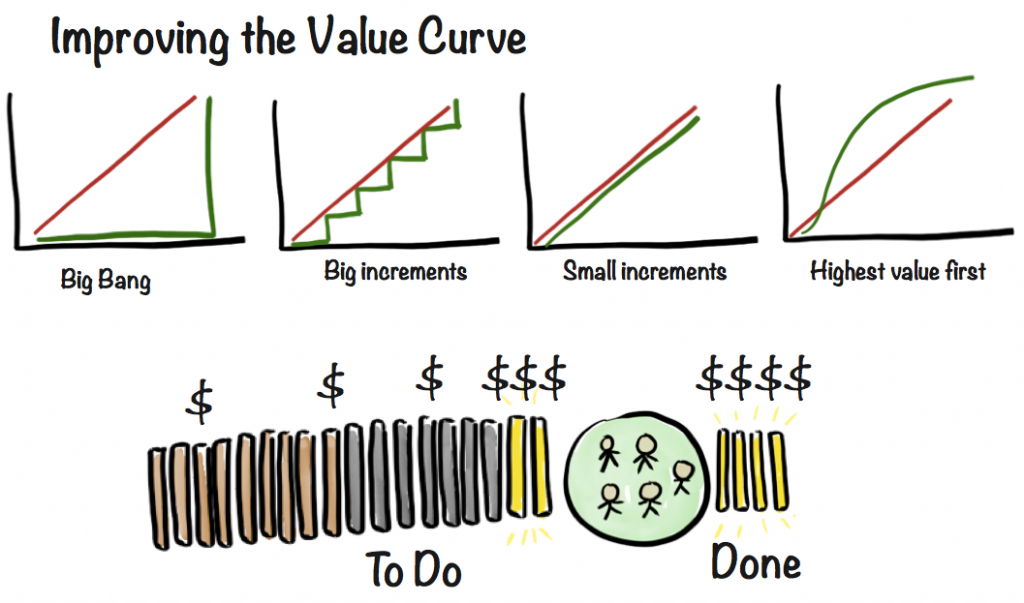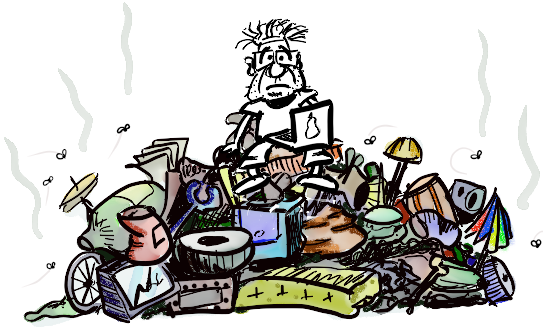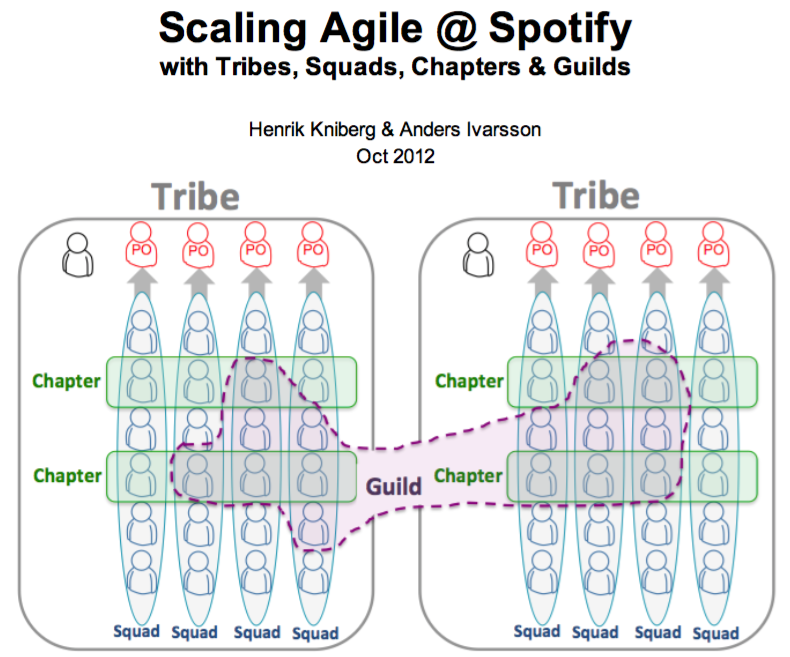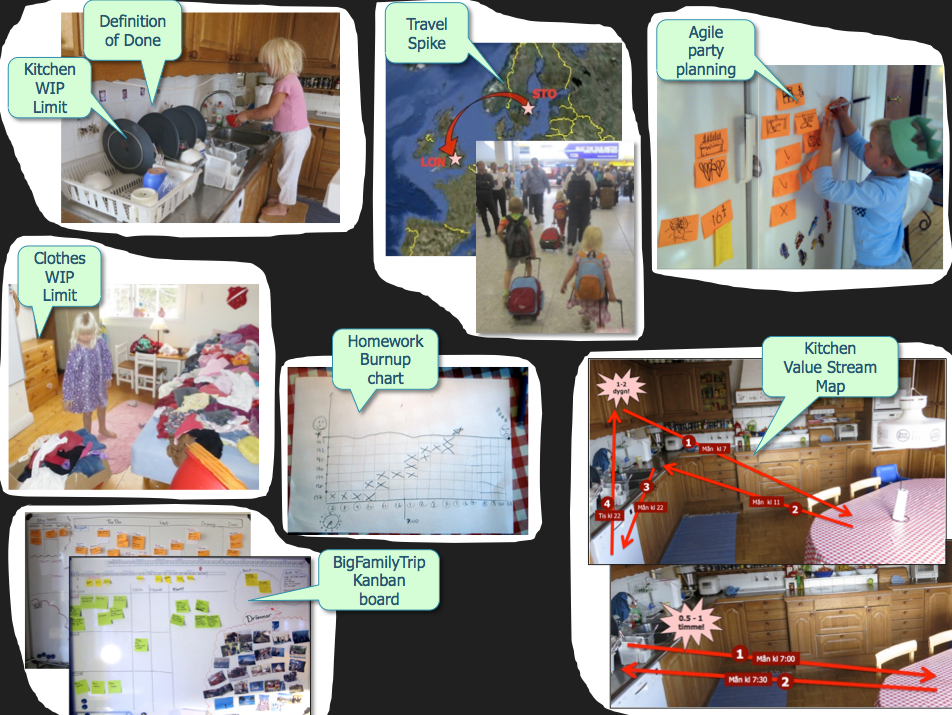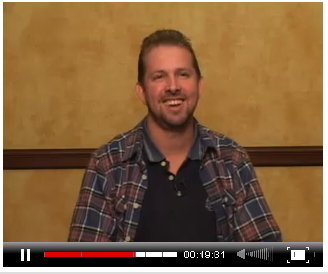We are 35 people at Crisp now, and we are a decentralized organized with no managers. So how do decisions get made? This article is a direct translation of our internal wiki page “Hur vi tar beslut på Crisp” (how we make decisions at Crisp).
Henrik Kniberg
Acceptance-Test Driven Development from the Trenches
Getting started with ATDD Have you ever been in this situation? Then this article is for you – a concrete example of how to get started with acceptance-test driven development on an existing code base. Read on.
Continue readingHow I write (and why)
The purpose of this article is…
Actually, there is no purpose. There never is. I just write because I feel like it. Then I read the article and make up a purpose afterwards, and start eliminating anything in the article that doesn’t fit that purpose. But I won’t do that this time. Read on and you’ll understand why. By the way, this text is blue because it’s my second iteration. Black text is the original, first iteration. Here it is:
Let me tell you about my creative process. Every writer has a creative process. Otherwise they wouldn’t get anything written; well, at least not anything creative 🙂Continue reading
Good and Bad Technical Debt (and how TDD helps)
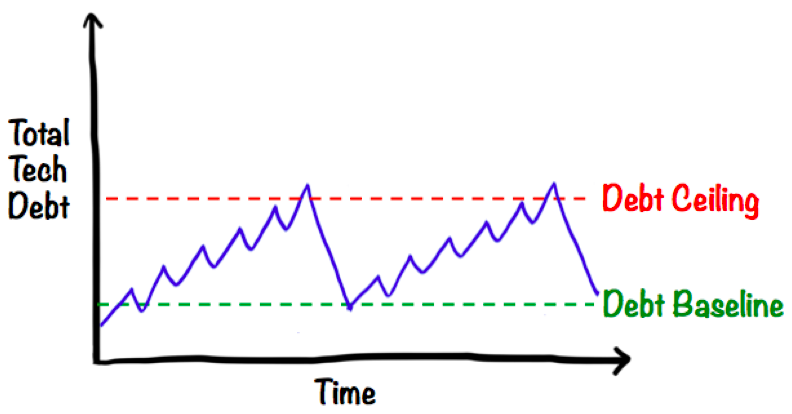
Technical Debt is usually referred to as something Bad. One of my other articles The Solution to Technical Debt certainly implies that, and most other articles and books on the topic are all about how to get rid of technical debt.
But is debt always bad? When can debt be good? How can we use technical debt as tool, and distinguish between Good and Bad debt?
Culture > Process (Paris Scrum Gathering keynote)
Here are the slides for my keynote “Culture > Process” at the Paris Scrum Gathering. Amazing level of enthusiasm in the room, seems like this kind of stuff was exacty what people were looking for. Happy to see the ideas take such strong hold!
- Video recording part 1 (starts at 0:30)
- Video recording part 2
Agile event @ major swedish bank
Yesterday I spent a very inspiring day with a big swedish bank, doing agile intros with 1200 people. We had developers, designers, testers, C-level execs, project leads, pretty much every role represented. The CEO opened with words about why they are determined to go all-out agile, and we had a speaker from another even bigger company describe their ongoing agile journey and amazing results so far. Very interesting. And best of all – no roadmap or other fake attempts at pretending that we know what the journey is going to look like. It was clear that this is a bumpy ride and that change will have to evolve gradually from bottom as well as from top.
Elephant Carpaccio facilitation guide
The Elephant Carpaccio exercise is a great way for software people to practice & learn how to break stories into really thin vertical slices. It also leads to interesting discussions about quality and tech practices. The exercise was invented by Alistair Cockburn. We’ve co-facilitated it a bunch of times and encourage people to run it
Continue readingThe Solution to Technical Debt
(related article: Good and Bad Technical Debt – and how TDD helps)
(Translations: Russian)
Are you in a software development team, trying to be agile? Next time the team gets together, ask:
How do we feel about the quality of our code?
Everyone rates it on a scale of 1-5, where 5 means “It’s great, I’m proud of it!” and 1 means “Total crap”. Compare. If you see mostly 4s and 5s, and nothing under 3, then never mind the rest of this article.
If you see great variation, like some 5s and some 1s, then you need to explore this. Are the different ratings for different parts of the code? If so, why is the quality so different? Are the different ratings for the same code? If so, what do the different individuals actually mean by quality?
Most likely, however, you will see a bunch of 2s or worse, and very few 4s and 5s. The term for this is Technical Debt, although for the purpose of this article I’ll simply call it Crappy Code.
Congratulations, you have just revealed a serious problem! You have even quantified it. And it took you only a minute. Anyone can do this, you don’t have to be Agile Coach or Scrum Master. Go ahead, make it crystal clear – graph the results on a whiteboard, put it up on the wall. Visualizing a problem is a big step towards solving it!
Don’t worry, you aren’t alone, this is a very common problem. <rant>However, it’s also a very stupid, unnecessary problem so I’m baffled by why it is so common.</rant>
Now you need to ask yourselves some tough questions.
How to run an internal unconference
An unconference is like a normal conference but with no predefined agenda, no predefined list of speakers, no slides, and…er… actually it’s not very much like a normal conference at all! It’s more like an alternative to a conference. If the purpose of a conference is to collaborate and communicate, then an unconference will often fulfill the
Continue readingJune 17-18: Advanced Agile with Alistair & Henrik
Good news: Alistair Cockburn is in Stockholm June 17-18! We’ll be teaching Advanced Agile, a workshop for those of you who already have agile training and experience, and want to dig deeper! Register here if you are interested. Alistair is a very inspiring fellow! He wrote the original book Agile Software Development and was one of the people
Continue readingStop Starting, Start Finishing – slides from Aggro Pekuliar
Hi! Here are my slides Stop Starting, Start Finishing from Aggro Pekuliar. Thanks for attending! And what a cool conference, nice to hang out with a bunch of non-techies for a change 🙂
Continue readingCrisp DNA spreads to New Zealand!
Sometimes people approach us at Crisp, and ask if we would consider starting a subsiduary in country X or Y. We normally respond with something like “Sounds cool! But we are a Stockholm company and don’t want the hassle of running a multinational corporation, not unless we see a clear and strong benefit (and we
Continue readingStop Starting, Start Finishing! My slides on how to improve your life.
Here are the slides from my keynote Starting Start Finishing from the LeanKanban Nordic conference.
Thanks for the great response! It seems like this was exactly the type of stuff people needed to hear! Some of the most tweeted quotes from the presentation:
- “Organizations with slack are faster than organizations where the goal is to keep people busy all the time.”
- “Those who can’t say no to anything, are those who burn-out and must say no to everything”
- “Time is free! You get 24hrs per day!”
- “I wanted a long term client because then I can see the consequences of the bad advice I’m giving” (hmmm…. maybe I shouldn’t have said that… lol)
- This tweet warmed my heart: “@henrikkniberg has totally done it for me today. I need to change my life! 🙂 #sssf13”
Below are some sample slides. I had a lot of fun drawing the pics for this presentation! Thanks for giving me an excuse to waste spend time on that 🙂
Oh, and before you ask. I used ArtRage (software) and Intuos5 (drawing tablet).
Agile India slides
Agile India 2013 in Bangalore. Wow, what an awesome conference! I was amazed by the energy level of the participants, spent hours talking to people about all kinds of really interesting challenges. Based on the fully packed rooms and incredible feedback, it seems like my talks were exactly the kind of information people were looking
Continue readingExperiment: Do kids really want school?
Over lunch, the kids were griping a bit about how the winter vacation is too short, and how it should be MUCH longer! The vacation should be several weeks, or months, or even years! Imagine that!
So Mr Evil Coach Dad decided to try an idea on them 🙂

How to build the Right Thing
The software industry is going through a shift of mindset.
Agile basically solved the problem of how to deliver software. Most any company that applies an agile method and mindset can get working software out the door. Now, the biggest waste in software development seems to be building the wrong product, or the wrong features.
“There is surely nothing quite so useless as doing with great efficiency that which should not be done at all” -Peter Drucker
This insight has given rise to methods and techniques such as Lean Startup, Impact Mapping, Story Mapping, Feature Injection, etc. But is there a common denominator, a set of underlying principles?
On Feb 11, Gojko Adzic organized a full-day meetup in London with people deeply engaged in this issue, people like Jeff Patton, Mary Poppendieck, Ingrid Domingues, Chris Matts and others who have been inventing and spreading techniques for dealing with the how-to-build-the-right-stuff issue.
It was a very inspiring day! We compared our different approaches and experiences, extracted the core principles, and (to our surprise) managed to condense it into this shared message:
Great results happen when:
1. People know why they are doing their work.
2. Organizations focus on outcomes and impacts rather than features.
3. Teams decide what to do next based on immediate and direct feedback from the use of their work.
4. Everyone cares.
There. So now just go do it! 🙂
Actually, if you want a more detailed description of each point see Gojko’s post.
Posts from the other participants:
- Gojko Adzic – The February Revolution
- Karl Scotland – Heuristics for building the Right Thing
Scaling Agile @ Spotify (JFokus slides)
Here are the slides from the Jfokus talk that Anders Ivarsson and I did on Scaling Agile @ Spotify.
Continue readingHow to run a Big Retrospective
At Spotify we recently did full-day retrospective with 65 people. The goal was to capture learnings from a large coordinated effort involving dozens of teams for over half a year. The teams had been doing sprint retrospectives during the project, but we also felt the need to get a larger group together and look at
Continue readingLean Mindset with Mary Poppendieck, Feb 7-8
On Feb 7-8 Tom & Mary Poppendieck will be in Stockholm, we are running a workshop called “Lean Mindset“. Mary and Tom are only here 1-2 times per year, so this a good opportunity! The workshop emphasizes research, case studies and exercises. You will learn what a lean mindset is, how other companies have exposed
Continue readingHow Spotify builds products
Product development isn’t easy. In fact, most product development efforts fail, and the most common reason for failure is building the wrong product.
Spotify is a Swedish lean startup with an awesome track record of product delivery. The products are designed to be easy, personal, and fun. Even Metallica, long known as die-hard opponents to music streaming services, now say that Spotify is “by far the best streaming service” and are “stunned by the ease of it”.
Here’s the paradox though: Successful companies like Spotify only want to deliver products that people love. But they don’t know if people love it until they’ve delivered it. So how do they do it?
Check out the article “How Spotify Builds Products”
Scaling Agile @ Spotify with Tribes, Squads, Chapters & Guilds
(UPDATE: see Spotify Engineering Culture, two short animated videos showing how we work)
Dealing with multiple teams in a product development organization is always a challenge!
One of the most impressive examples I’ve seen so far is Spotify. I’ve had the pleasure of working with Spotify on and off ever since the company was founded, and it’s one of the few companies I’ve seen with a truly agile culture. Spotify has grown a lot lately and now has hundreds of developers divided into 30 agile teams spread over 4 cities in 3 timezones. So how is this managed?
Check out the article: Scaling Agile @ Spotify with Tribes, Squads, Chapters and Guilds. I wrote it together with Anders Ivarsson, one of the agile coaches that I’m working with (Spotify has a truly awesome group of coaches!).
Lean from the Trenches @ Øredev
Here are the slides for my talk “Lean from the Trenches” at Øredev, Malmö. And here is the book/ebook, in case you want more details. There may also be some copies left at the conference bookstore. Thanks for attending!
Continue readingAgile Product Ownership in a nutshell
This is basically a 1 day product ownership course compressed into a 15 minute animated presentation.
Over a million views! Some call it “The best 15 minutes on the Internet” 🙂
There’s obviously more to product ownership than this, so see this is a high level summary.
- Here’s the complete drawing (.png format)
- Here’s a downloadable version of the video, in case you don’t want to stream (.mov format, 90 Mb)
Special thanks to Alistair Cockburn, Tom & Mary Poppendieck, Jeff Patton, Ron Jeffries, Jeff Sutherland, and Michael Dubakov for providing many of the models, metaphors, and ideas that I use in this presentation.
Translations: (see also the translation guide by Cédric Chevalerias)
- Chinese – simplified (subtitles)
- Chinese – traditional (subtitles)
- French(subtitles)
- French (voice)
- German (subtitles)
- German(voice)
- Italian (voice)
- Japanese (subtitles)
- Polish (voice)
- Portuguese – Portugal (voice)
- Portuguese – Brazil (voice)
- Russian (voice)
- Spanish (subtitles)
Below is a full transcript in english. But I recommend watching the video instead of reading the transcript. The video is 100% visual, the transcript is 0% visual…
Agile @ Home (AgileEE keynote)
Here are the slides for my third(!) keynote at Agile Eastern Europe. The guy who was supposed to do the afternoon keynote couldn’t make it, so I was invited to jump up and do another one (talked about Spotify, but I don’t yet have permission to publish those slides, sorry). And then that one finished early, so I filled in the last 20 minutes with this short talk about Agile @ Home. Three keynotes in one day must be some kind of record 🙂
Thanks for listening, and glad to see that so many of you were so excited about the idea of using Agile outside of work 🙂
Lean from the Trenches keynote @ AgileEE, Kiev
Here are the slides for my keynote “Lean from the Trenches” at Agile Eastern Europe, Kiev. And here is the book/ebook, in case you want more details. Thanks for attending!
Continue readingAgile Evening with Alistair and Henrik
On Tuesday Oct 2 Alistair Cockburn and I are hosting a free evening event at Crisp. I’ll be talking a bit about my current client Spotify, which has a cool scaling approach with “tribes”, “squads”, “guilds”, and “chapters”. Then Alistair will talk about whatever topic the participants choose. Then we’ll have discussions and finger food. Feel free to
Continue readingInterviewed by InfoQ
Here’s an interview by InfoQ. I talked about my books, my travels, the agile manifesto translation project, coaching coaches, agile trends, and various other stuff. The interviewer (Craig Smith) had a great set of questions, and I’m pretty happy with my answers 🙂
Continue readingAdvanced Agile with Alistair Cockburn, Oct 1-2
On Oct 1-2 Alistair Cockburn is in Stockholm teaching Advanced Agile together with me. He has been here twice before and course reviews have been great! Alistair has a very pragmatic down-to-earth style, while maintaining the theoretical depth needed for an advanced course. He’s not only a Fun Guy, he’s the guy who (literally) wrote
Continue readingUsing CloudBees for teaching XP practices
We are doing a course called “Certified Scrum Developer”. We are of course proud of being one of the few eligible by the Scrum Alliance to hold such a course. But what matters most to us is teaching some modern development practices. The certificate bit is more of a bonus.
Crisp had recently its fifth installment of a code camp, the “Crisp Hack Summit”. It is an occasion for everyone at Crisp to go bananas on some project of their liking. We took the chance to work on the technical platform for the CSD course. We know from experience that you can loose a lot of valuable lecture time if the technical environment decides to hassle. Murphy, will you be there?
Everybody wants Change – but nobody likes to Be Changed
Here are the slides from my Ale2012 keynote: Everybody wants Change – but nobody likes to Be Changed.
Thanks for coming!




